
Since the beginning of time, man has been fascinated with the heavens and its components. The solar system and the planets are ever expanding sources of information and the little we have managed to know until now only increases our curiosity to know more.
A brief account of the birth of the solar system and the planets
We have perceived the solar system for a long time as a neatly arranged set with the Sun in the middle and the eight planets orbiting around it in their neat little orbits, minding their own business. This perception also probably gave the impression that these planets formed within their own orbits in a quiet and peaceful manner. However, several observations and inferences later, we understand that the formation process of two rocky planets, two ice giant and four gas planets was as dramatic as it could be. It likely involved asteroids colliding into unruly planets wandering into each other’s orbits and even an expulsion at one point.
The formation of the planets is estimated to be 4.6 billion years ago, initiated by the collapse of what is termed as a “giant molecular cloud”. A major portion of the cloud formed due to this collapse, caused the formation of the Sun and the rest is supposed to have formed a flat disk, out of which formed the planets and other celestial bodies.
A closer look at the planets
Mercury

Terrestrial planet
Mercury is the smallest and fastest planet in the solar system. It completes an orbit around the sun in just 88 days and only has a diameter of 3032 miles. Mercury is also closest to the sun, but is not as hot as would be expected of a planet that is so close to the sun because it does not have an atmosphere to trap the heat. Its lack of an atmosphere also increases the impact of bombarding meteors. As a result, Mercury looks particularly beaten up, compared to the other planets. On planets such as earth, that have an atmosphere, the meteors would burn up before they reach the surface due to the friction of the atmosphere.
Mercury has no rings, no moons and an extremely weak magnetic field.
Venus
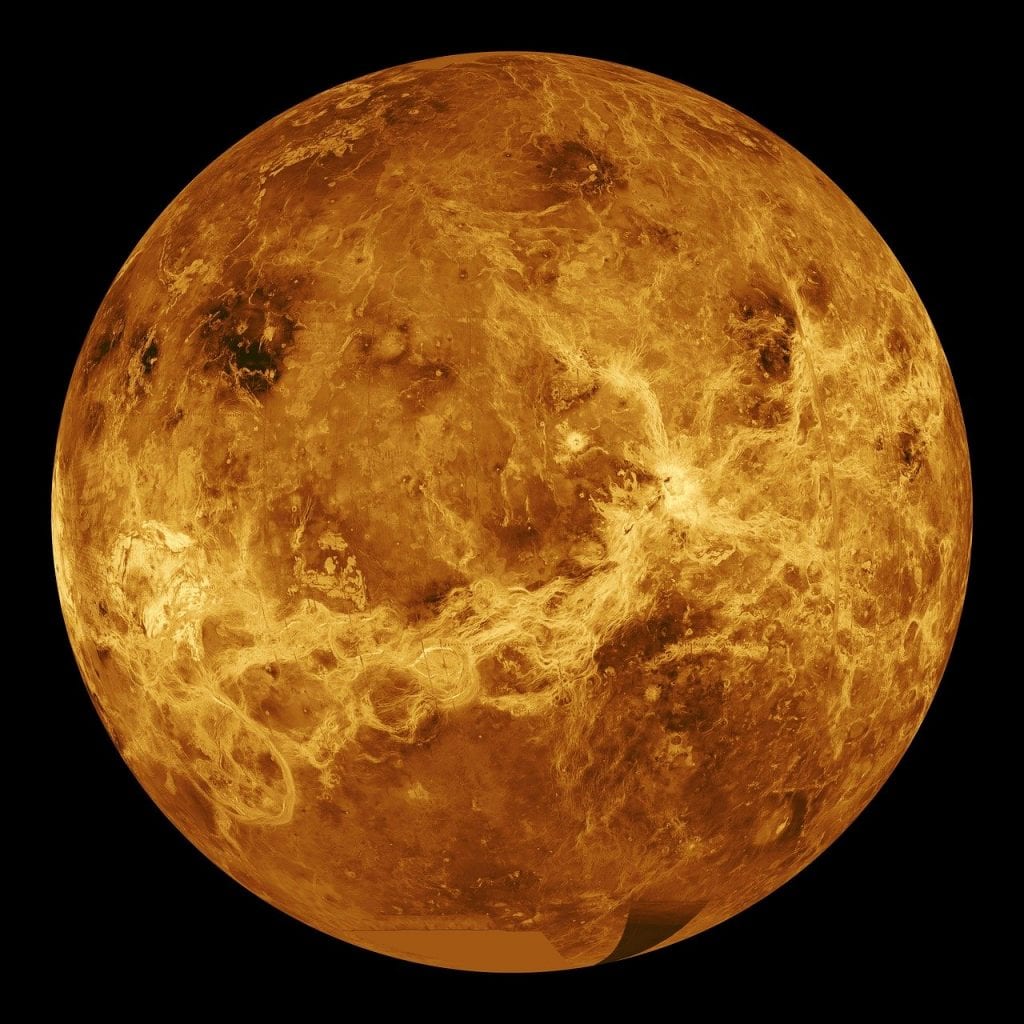
Terrestrial planet
Venus is also known as the morning star and the evening star, from before people realized that it was one and the same, and that it was a planet. Venus has the heaviest atmosphere of all the planets. Being second closest to the Sun and a heavy atmosphere composed of carbon dioxide and sulfur, Venus is also the hottest planet. Interestingly, Venus is observed to spin in the opposite direction compared to that of the other planets, and also spins the slowest. Venus takes 243 Earth days to complete one spin on its own axis.
Earth
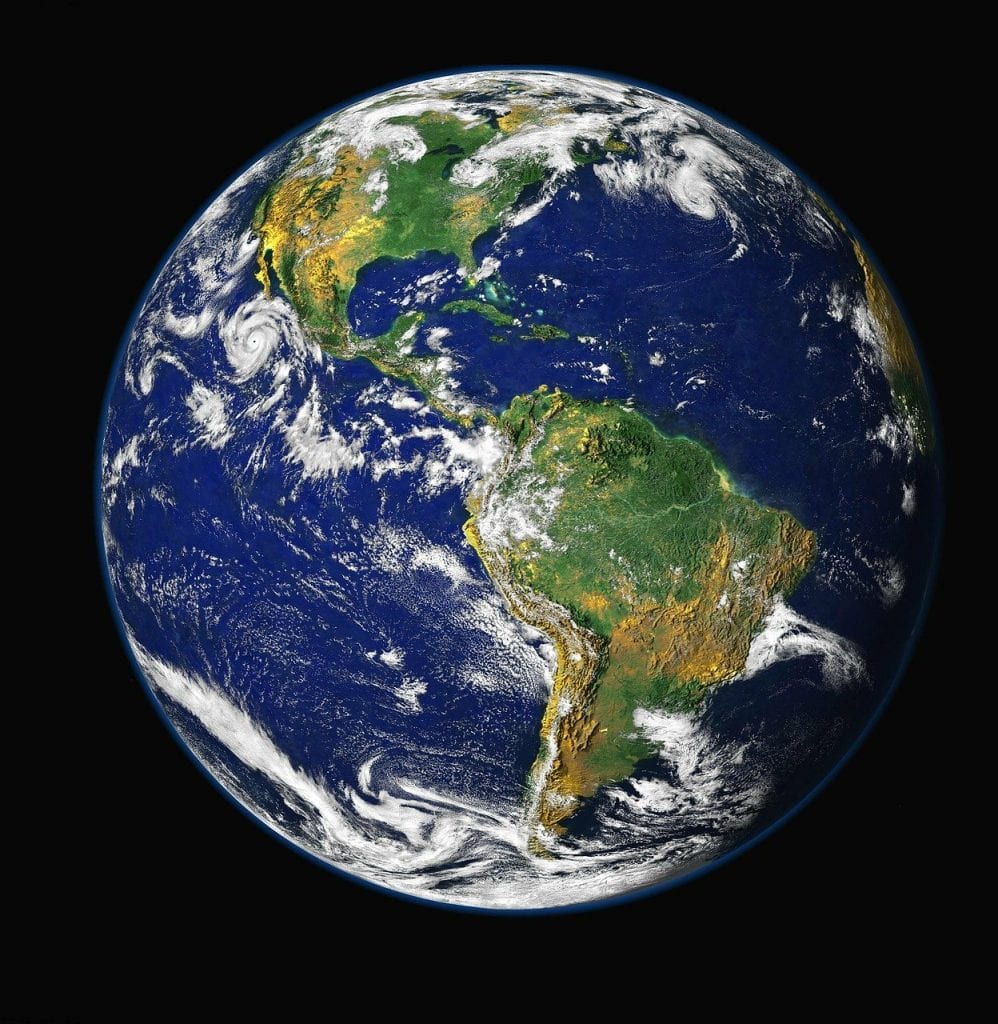
Terrestrial planet
The biggest among the terrestrial planets and the fifth biggest among all planets, earth is the only planet that has oxygen in its atmosphere and 71% water on its surface, also, not to mention, life.
Earth has its roughly round shape, with a diameter of 8000 miles, owing to its gravity. The shape of earth is more specifically called “oblate spheroid” since it looks slightly bulged at the equator and flatter at the poles. The axis it spins on is also not always upright. Earth’s axis is inclined relative to an imaginary plane called the ecliptic plane. This causes the poles to be closer of farther away from the sun for several days, experienced as seasons on Earth.
Mars
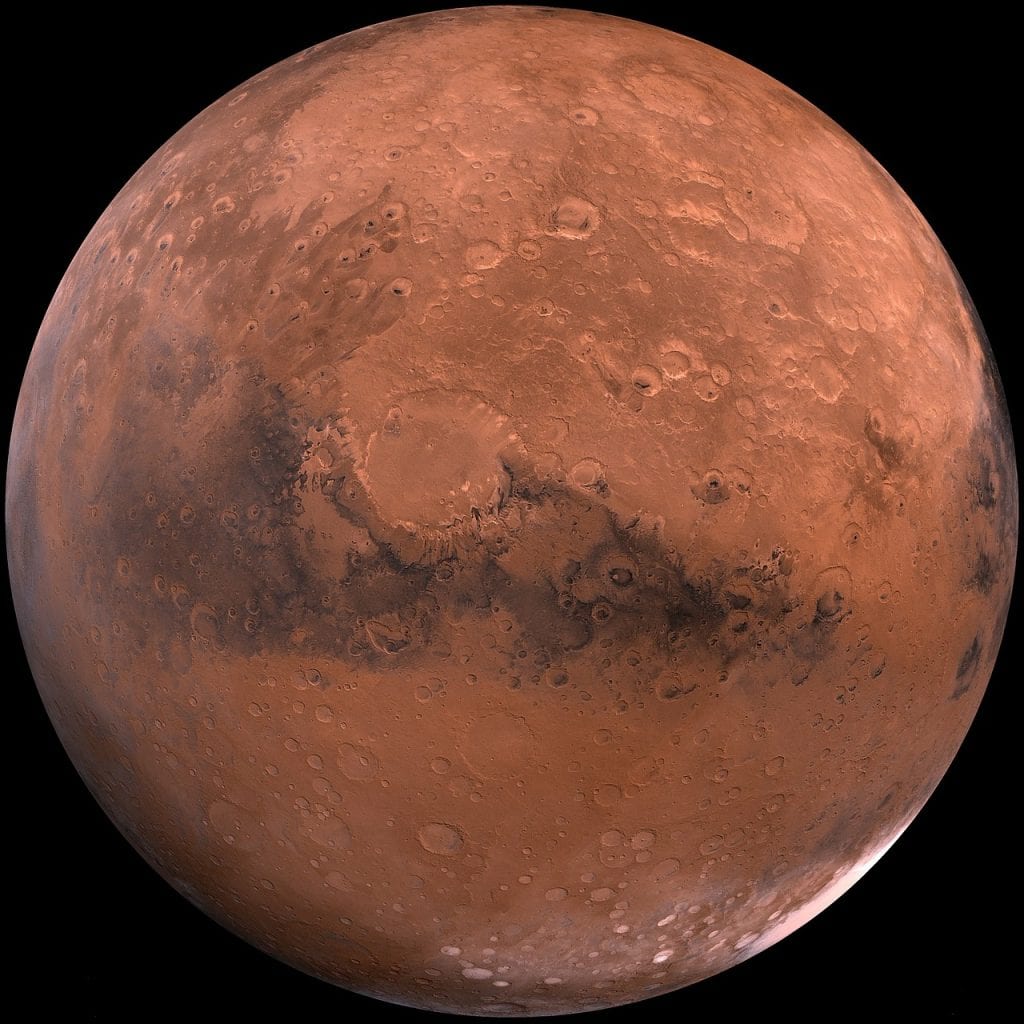
Terrestrial planet
Being the closest to Earth, Mars also has the most resemblance to Earth, in terms of its land characteristics. Due to a very thin atmosphere and a much colder climate than Earth’s it is inferred that water is unlikely to be found in its liquid form on Mars. However, Mars has an abundance of polar ice caps. Interestingly, it was observed that Mars’s unusual tilt on its axis that varies wildly (due to the absence of a big enough moon to stabilize it) sometimes gives out methane gas into its atmosphere which could cause the ice caps to melt for sometime. The atmosphere also has clouds, winds and weather. All these factors gave reason to presume that Mars might have some kind of life on it, but any reliable evidence is yet to come.
Jupiter
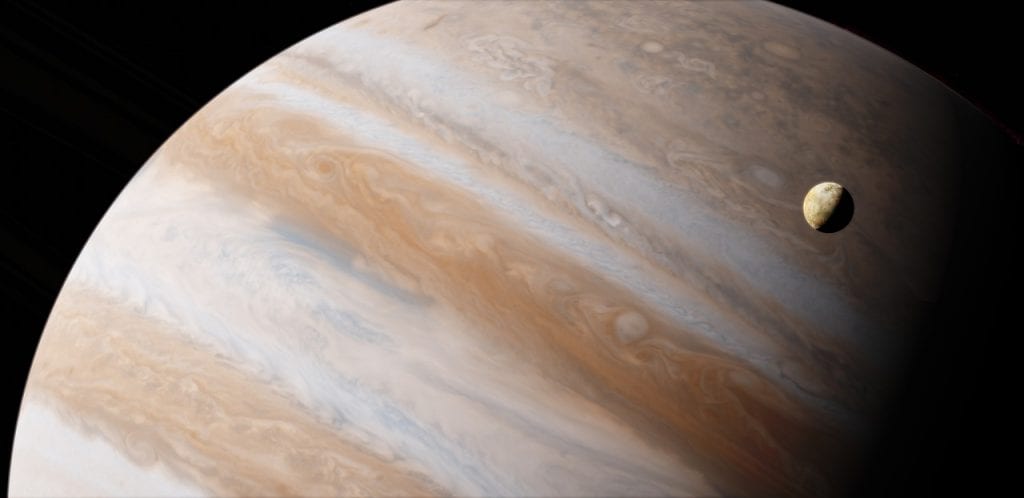
Gaseous
Jupiter is very close to being a star in terms of its size. Its atmosphere resembles that of the Sun, composed mainly of hydrogen and helium. The most remarkable facts about Jupiter are its moons and the Great red spot which is a hurricane that can be as big as the Earth at times. Jupiter has four large moons and several smaller moons orbiting around it, a total of 79 moons, which resembles a solar system on its own. The largest moon is also larger than Mercury.
Jupiter also has the strongest magnetic field of all planets, often trapping electrons in a belt of electrically charged particles that frequently emit massive radiations that has been known to cause damage to some of our most shielded spacecrafts.
Saturn
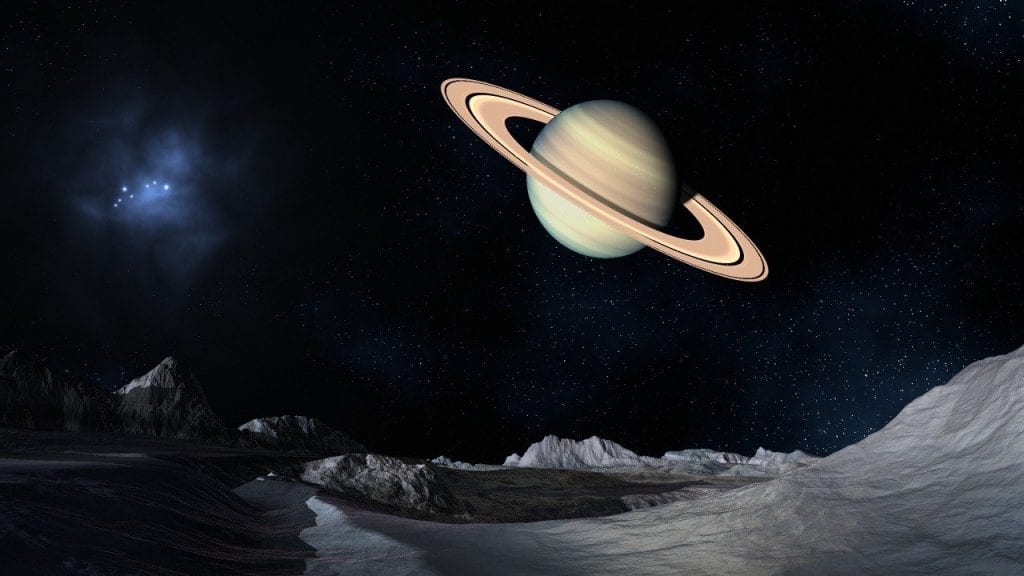
Gaseous
Saturn is the farthest planet that is visible from earth without the help of a telescope. A gaseous planet much like Jupiter, its atmosphere is composed mainly of hydrogen and helium. It is also the least dense planet, even lighter than water. Saturn is known most popularly for its very prominent rings. These rings are belts composed of billions of particles that are constantly moving around in it. These particles are assumed to be pieces of debris caused by the constant bombardment of asteroids and meteors. It is also possible that they might be remnants of dwarf planets.
Much like Jupiter, Saturn also has several moons, totaling up to 62. Titan, the largest moon is slightly larger than the planet Mercury.
Uranus

Initially assumed to be a star, Uranus soon caught attention due to its unusual and extreme tilt of its axis, making its poles either directly facing the Sun or entirely away from it. Due to this, the seasons on Uranus are most extreme. Additionally, Uranus is also the coldest, partly owing to its distance from the Sun and partly because its core doesn’t generate any heat.
The atmosphere resembles that of Jupiter and Saturn, mostly made of hydrogen and helium along with some methane, which gives it the spectacular blue-green color. The planet is considered to be mostly ice, since it is mostly composed of water, methane and ammonia ice. Uranus is 4 times wider than earth and has 13 rings and 27 moons.
Neptune

Neptune would not have been discovered if it wasn’t for the irregularities observed in Uranus’s orbit. Neptune is the farthest planet in the solar system and is not visible to the naked eye from earth. However, from the irregularities in Uranus’s orbit the it was posited that a celestial body might exist, which might be exercising a gravitational force on Uranus. The planet’s composition resembles that of Uranus, mainly water, methane and ammonia. Because of this composition, both Uranus and Neptune are called ice giants. The methane in Neptune absorbs all the red light giving it the distinct blue color. Pluto, which was considered the farthest planet before it was categorized as a dwarf planet, is however sometimes closer to the Sun than Neptune owing to its elliptical orbit. Neptune has 5 main rings and 14 moons, of which the largest, Triton is known to orbit it in retrograde, the only moon known to do so.

